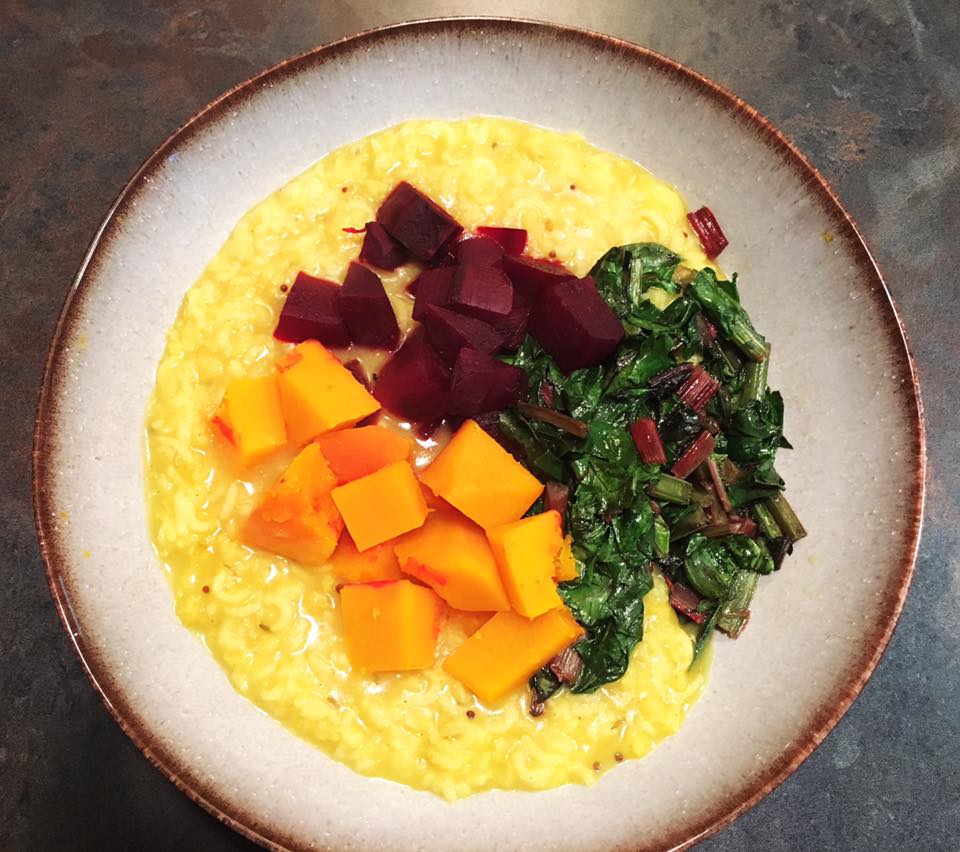With holiday gluttony in our recent pasts, January is a perfect time of year to cleanse and support healthy digestion. Kitchari is a nourishing Ayurvedic dish, that is common in India and Nepal, which is balancing for all constitutions or doshas. It includes each of the six tastes: sweet, sour, salty, pungent, bitter and astringent. It can be enjoyed as a regular meal in your rotation of recipes or used specifically as a cleanse. When using Kitchari to restore the digestive system as a cleanse, it is suggested to eat Kitchari for each meal, for three to seven days.
This is exactly what I have done the past three days. It has helped restore my digestive system to balance after eating those darn peanut butter and chocolate kiss cookies over the holidays. I do not tolerate gluten, I definitely indulged, and was feeling the repercussions! With over a decade of experimenting with Kitchari, I have found that for the best digestibility, it is essential to soak the split mung dal and rice as well as to use kombu, ginger and spices. Soak the split mung dal and rice in separate dishes in cold water for at least six hours. It takes a little extra planning but is well worth it.
-When you do not want to give great thought to dinner plans
-When you crave a warming and nourishing meal
INGREDIENTS
2 tbsp ghee
½ tsp black mustard seeds
1 tsp cumin seeds
1 small pinch of hingvastaka
1 tsp turmeric powder
1 tsp cumin powder
1 tsp coriander powder
½ c split yellow mung beans, soaked overnight and rinsed
1 c white Basmati rice, soaked overnight and rinsed
6 c water, more or less depending on the consistency you like
1 strip kombu seaweed
1-2 tbsp fresh ginger root, minced
1 tsp pink salt
lime, garnish
cilantro, garnish
METHOD
- In a large pot that has a lid, on medium-low heat melt the ghee and add the black mustard seeds and cumin seeds; sauteing until the seeds are aromatic.
- Add the hingvastaka, turmeric, cumin and coriander powders; sauteing until slightly fragrant, a minute or so.
- Add the split mung beans, rice, water, kombu, and ginger.
- Bring to a boil, then turn the heat to low, cover the pot, and simmer until the dal and rice are very soft. Typically 45-60 minutes.
- Garnish with fresh lime and cilantro.
This is the basic Kitchari recipe. You can experiment with adding 2 cups of vegetables. Add diced roots such as carrots, squash, beets, turnips, parsnips or sweet potato, the last 20 minutes of cooking. Add chopped greens such kale, chard or collards the last minutes of cooking. Stir in delicate greens such as spinach, arugula or sprouts after cooking. Or as I did here, add steamed or sautéed vegetables to each bowl.
Serves 6

